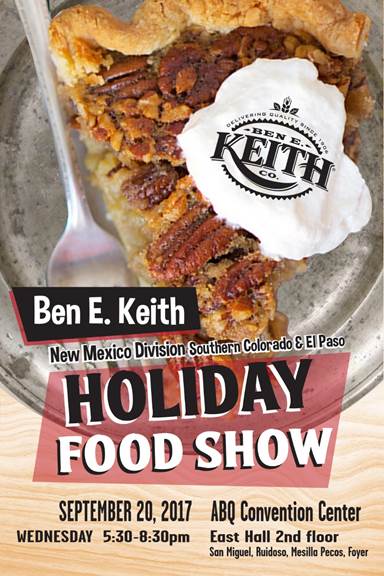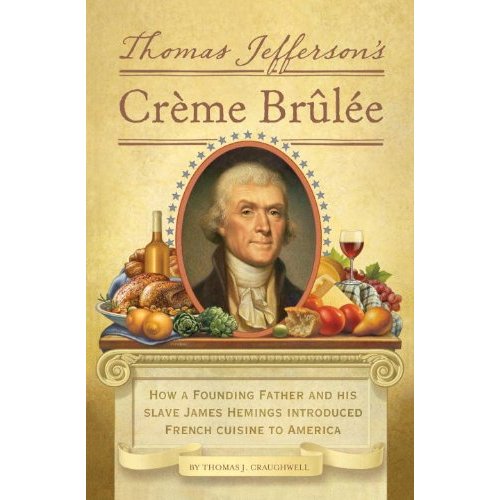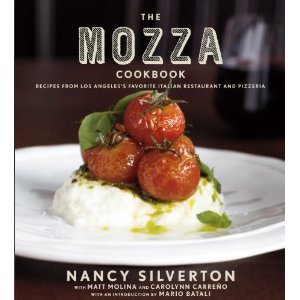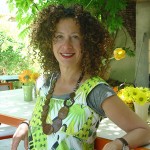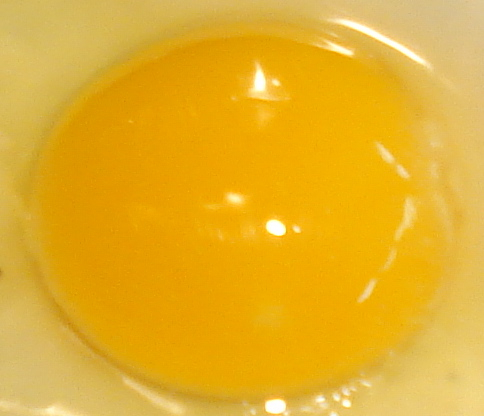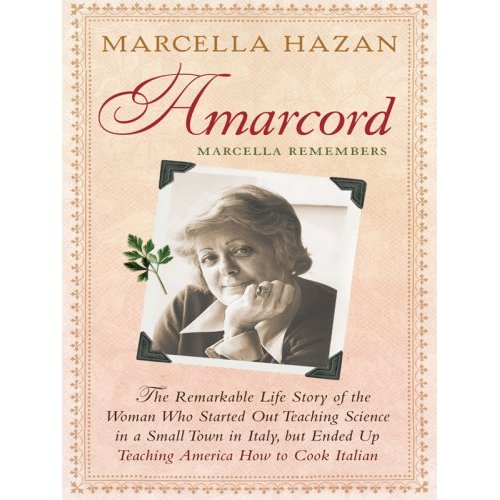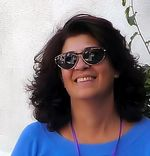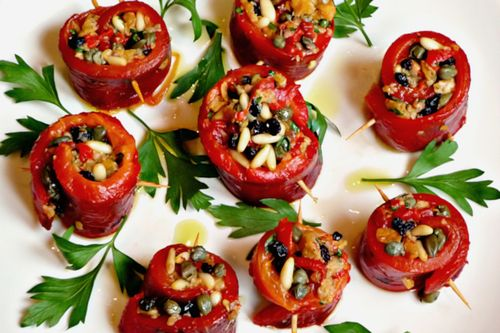Category: Chefs
5 Reasons to Visit Taos
Luxury travel website Tripveel released its latest “5 Reasons to Visit . . .” feature today with 5 Reasons to Visit Taos. We especially love #3: Yes, The Blonde Bear Tavern.
Located within Edelweiss Lodge & Spa—The Blonde Bear Tavern personifies the unique personality of Taos Ski Valley like no other. Chef Jon Mudder has transformed this once-sleepy restaurant into a world-class destination that is now known throughout the Rocky Mountains for its critically-acclaimed food.
Read the whole thing here. Their Instagram post is here.
Tripveel is powered by Booking.com and OpenTable, part of the Priceline Group.
“1855” Black Angus Premium Beef Featured at Ben E. Keith’s Food Show
I will be a Featured Chef at this year’s Ben E. Keith Holiday Food Show on September 20th at the Albuquerque Convention Center. I will be working with Tom Bertelle, the company’s expert Center-of-Plate Manager, and we will be featuring beef from JBS Swift Group’s “1855” Black Angus premium beef. I will be preparing prime rib.
I had the opportunity to sample this beef a couple of weeks ago and tasted several cuts: filet, bone-in New York, and bone-in rib-eye. All were excellent with marvelous earthy meat flavor and perfect mouth-feel. This meat stands up to just about any I have ever tasted.
“1855” sources its beef from two ranches located in my home state of Nebraska:
Wagonhammer Ranch

When you live in Wheeler County, Nebraska — where the cattle outnumber the people — you know you are in an area that understands beef.
The Waggonhammer Ranch is a family-owned and operated ranch that opened its gates in 1910. The Black Angus cattle this ranch produces are highly sought after and known to be of the highest quality. Besides the attention to detail, the toil, and the sweat, Jay Wolf, rancher-owner at Wagonhammer, believes it is something specific that helps the cattle he raises earn the reputation they do.
“This is rich cow-calf country. We’ve been blessed with great grass,” says Wolf. “We take good care of the land, and it takes good care of us.”
For more than a century, the Wagonhammer Ranch has proved that the best Angus beef starts with a strong passion and understanding for what it takes to produce it. “My father was a Rancher, his father was a Rancher and I am carrying on all that they started.”
Pawnee Springs Ranch
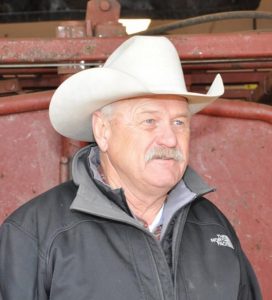
At the wheel of his pickup truck driving the perimeter of the Pawnee Springs Ranch, Ranch Manager Steve Boeshart shares his passion for producing quality Angus cattle. “Ranching is a lifestyle. It’s not a job – it’s a way of life. And it is a lot of fun.”
When you raise the exceptional cattle that come from North Platte, Nebraska, everything on the ranch must be considered.
“We run and maintain everything ourselves to make it all more usable and more cattle friendly, it seems to be our second biggest challenge,” Boeshart says. “Mother Nature is out first. Trying to figure her out is always interesting.”
Boeshart, his family, and everyone involved in the Pawnee Springs operations are always trying to build a better herd by considering everything from feed to weaning to genetics.
It is a lot of work, but one Boeshart enjoys in every aspect. “It’s getting up in the morning and doing what we do. I enjoy it all.”

These ranchers have a great respect for the industry and for their land. They raise cattle in a very humane way, free from the stress of most industrialized mega cattle ranches where most of this country’s beef is raised. The cattle are processed at a plant in Grand Island, Nebraska, just 20 miles north of where I grew up in Hastings.
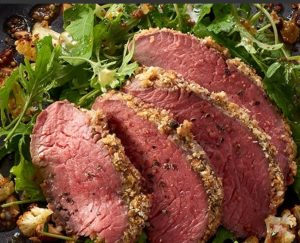 Most folks think of beef in terms of a commodity, but believe me, as a Nebraska native and chef, I know better. “1855” beef proves my point.
Most folks think of beef in terms of a commodity, but believe me, as a Nebraska native and chef, I know better. “1855” beef proves my point.
Come taste for yourself on September 20th. Stop by and say hello and sample some of the best beef you’ll ever taste.
I’m proud to be serving this beef from two of Nebraska’s hardest-working and talented ranchers. See for yourself in the video below (the default audio is off, so be sure to turn it on near the lower right corner!):
USDA Prime Black Angus Beef Foodservice & Retail | 1855 Beef
Just Published: Thomas Jefferson’s Crème Brûlée: How a Founding Father and His Slave James Hemings Introduced French Cuisine to America
.
In 1784, Thomas Jefferson struck a deal with one of his slaves, 19-year-old James Hemings. The founding Father was traveling to Paris and wanted to bring James along “for a particular purpose” – to master the art of French cooking. In exchange for James’s cooperation, Jefferson would grant his freedom.
Thus began one of the strangest partnerships in U.S. history. As James apprenticed under master French chefs, Jefferson studied the cultivation of French crops (especially grapes for winemaking) so they might be replicated in American agriculture. The two men returned home with such marvels as pasta, French fries, champagne, macaroni and cheese, crème brûlée, and a host of other treats. This narrative nonfiction book tells the fascinating story behind their remarkable adventure – and includes 12 of their original recipes.
The book, scheduled to be published September 12, is by Thomas J. Craughwell, who provides a synopsis in the latest issue of The American Spectator:
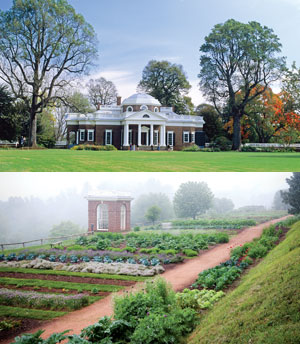 Jefferson’s desire for a French chef was not a sign that he was a food snob. He enjoyed plantation fare, so much so that while he was in Paris, he developed a Hankering for smoked Virginia ham and Indian corn. But he also had a taste for the best, and French cuisine was said to be the best in the world. His passion for good food was a natural extension of his passion for gardening and his fascination with plants. His gardens were not simply decorative; they produced the fruits, vegetables, and herbs that fed his family. They were also botany laboratories where he experimented to see which varieties of fruits and vegetables would thrive in Virginia. In 1770, behind Monticello, he had his slaves cut a large terrace from the side of the mountain and clear the ground for a kitchen garden that ultimately would grow to be 1,000 feet long and 80 feet wide. In time, it would produce more than 300 varieties of vegetables.
Jefferson’s desire for a French chef was not a sign that he was a food snob. He enjoyed plantation fare, so much so that while he was in Paris, he developed a Hankering for smoked Virginia ham and Indian corn. But he also had a taste for the best, and French cuisine was said to be the best in the world. His passion for good food was a natural extension of his passion for gardening and his fascination with plants. His gardens were not simply decorative; they produced the fruits, vegetables, and herbs that fed his family. They were also botany laboratories where he experimented to see which varieties of fruits and vegetables would thrive in Virginia. In 1770, behind Monticello, he had his slaves cut a large terrace from the side of the mountain and clear the ground for a kitchen garden that ultimately would grow to be 1,000 feet long and 80 feet wide. In time, it would produce more than 300 varieties of vegetables.
Other books by Craughwell include The Greatest Brigade: How the Irish Brigade Cleared the Way to Victory in the Civil War (Fair Winds, 2011) and Stealing Lincoln’s Body (Harvard University Press, 2007).
Order now and enjoy Amazon’s Pre-order Price Guarantee: If the Amazon.com price decreases between your order time and the end of the day of the release date, you’ll receive the lowest price.
Related:
.
Further Reading:
- Thomas J. Craughwell: Thomas Jefferson’s Crème Brûlée: How a Founding Father and His Slave James Hemings Introduced French Cuisine to America
- Thomas J. Craughwell: The Man Who Abjured His Native Victuals
- Official Site: Thomas Jefferson’s Monticello
The Mozza Cookbook: Another Winner from Nancy Silverton
Nancy Silverton was a frequent guest at Bellavitae and I always loved to see her. Her talented daughter Vanessa and gregarious father Lawrence were also wonderful to have in the restaurant. Better yet was when the three of them came together!
Nancy is co-owner of Osteria Mozza, Pizzeria Mozza, and Mozza2Go in Los Angeles, where she makes her home. She was the founder of the La Brea Bakery and formerly owned and operated Campanile restaurant (recipient of the 2001 James Beard Award for Best Restaurant).
She is the author of A Twist of the Wrist (which includes Bellavitae’s recipe for Piquillo Peppers with Tuna), Nancy Silverton’s Sandwich Book, Nancy Silverton’s Pastries from the La Brea Bakery (recipient of a 2000 Food & Wine Best Cookbook Award), Nancy Silverton’s Breads from the La Brea Bakery, and Desserts.
Nancy trained at London’s Le Cordon Bleu and Les Ecole Le Nôtre in Plaisir, France. In 1982, Wolfgang Puck hired her as pastry chef for Spago, the restaurant that helped jump-start Californian cuisine.
Here is Amazon’s description of Nancy’s latest endeavor, The Mozza Cookbook, co-authored by Matt Molina and Carolynn Carreno, to be released on September 27:
Nancy Silverton has one of the most brilliant résumés in the culinary world, and is currently the owner/chef of the two hottest restaurants in Los Angeles, Osteria Mozza and Pizzeria Mozza. With The Mozza Cookbook she brings us the delicious, wildly popular dishes from these eateries—as exciting and satisfying as anything you might be served in the heart of Italy.
Silverton takes us through a full Italian meal: stuzzichini (appetizers), latticini (mozzarella bar), antipasti, pizza, primi (pasta), secondi (meat and fish), contorni (sides), and dolci (desserts). The recipes range from familiar, simple tomato sauces, Garlic Crostini, Margherita and Funghi Misti pizzas, and Mussels al Forno with Salsa Calabrese to more intricate dishes like Fried Squash Blossoms with Ricotta, Burrata with Leeks Vinaigrette and Mustard Breadcrumbs, Grilled Whole Orata with Fresh Herbs and Olio Nuovo, and Olive Oil Gelato.
The detailed, easy-to-follow recipes; the author’s lively, encouraging voice; and her intimate, comprehensive knowledge of the traditions behind this delectably decadent cuisine make this the ultimate must-have Italian cookbook.
One commonality of Nancy’s cookbooks is, well, the recipes work. She is meticulous in most everything she does, which is reflected in her cookbooks. I’ve pre-ordered mine and saved 35%, which you can do by clicking here.
The Mozza Cookbook: Recipes from Los Angeles’s Favorite Italian Restaurant and Pizzeria, with an introduction by Mario Batali, promises to be another winner from Nancy Silverton.
Further Reading:
- StarChefs.com: Chef Nancy Silverton
- PBS: Julia Child: Lessons with Master Chefs
- Food & Wine: Nancy Silverton Does the Twist
- delish.com: Nancy Silverton
Consigli per la Cottura: Egg Yolks
The always-helpful Rose Levy Beranbaum offers three tips when using egg yolks, discussing the following:
- More and more often, the proportion of yolk to white is less than it has been over the past decades.
- If egg yolks are combined with sugar and allowed to sit they will crust over, dry out on the surface, and result in lumps in the cooked or baked product.
- If you have extra yolks, you can freeze them but only if you stir in some sugar which will maintain their texture.
.
Read the whole thing here.
Rose has an excellent blog for bakers, a great source for information that nicely compliments her highly acclaimed baking books; I highly recommend it!
“Rose Levy Beranbaum is the award-winning author of nine cookbooks, including The Cake Bible, the International Association of Culinary Professionals Cookbook of the Year for 1988. It was also listed by the James Beard Foundation as one of the top 13 baking books on “the Essential Book List.” Rose also won a James Beard Foundation Award in 1998 for Rose’s Christmas Cookies, and her book, The Bread Bible, was an IACP and James Beard Foundation nominee and was listed as one of the Top Ten Books of 2003 by Publishers Weekly and Food & Wine. Her most recent book, Rose’s Heavenly Cakes, won the International Association of Culinary Professionals Cookbook of the Year for 2010.
She is a contributing editor to Food Arts magazine and writes regularly for the Washington Post, Fine Cooking, Reader’s Digest, and Bride’s. Her popular blog, realbakingwithrose.com, has created an international community of bakers where you can visit Rose Levy Beranbaum and join in the discussion on all things baking. While you are there, you can bring the author right into your kitchen as she demonstrates key techniques and shares trade secrets so that you can create perfectly divine cakes.”
.
Marcella Hazan: Demystifying Italian Cooking
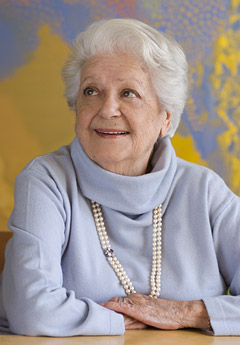
Cooking at home today, I referenced Marcella Hazan’s Essentials of Classic Italian Cooking, as I seem to do more often than I realize. The book, published in 1992, is a fully revised and updated edition of The Classic Italian Cook Book (published in 1973) and More Classic Italian Cooking (published in 1976). So this classic collection of classic Italian recipes and techniques – nearly 40 years old – is now itself a classic.
Marcella Hazan has sold more than a million books – and with good reason. Beautifully written, she takes you step by step through Italian dishes from nearly every region of Italy. Her techniques are explained in vivid detail and she offers a fascinating glimpse into Italian culinary history.
In 2008 – at the age of 84 – she wrote an autobiography, Amarcord: Marcella Remembers. The Remarkable Life Story of the Woman Who Started Out Teaching Science in a Small Town in Italy, but Ended Up Teaching America How to Cook Italian. As The New York Times describes it, the book “offers for the first time a public glimpse into the professional and romantic relationship between a science teacher from a small Italian town in Emilia-Romagna and the Italy-loving son of Jewish New York furriers. It is a marriage that shaped how Italian cooking came to be defined in the United States.”
And this from Publisher’s Weekly:
In 1969 Hazan gave the private cooking class that launched her career as the Italian Julia Child. In an evocative memoir, she recounts her life from childhood to Florida Gulf Coast retirement. Hazan spent her earliest years on another coast, in Cesenatico, a village on the Adriatic; during WWII the family moved to a lake in the mountains between Venice and Milan. Fresh out of the university, she taught college math and science and met a young man who had returned to his Italian homeland after more than a decade in America. He loved food, and his worldliness and sophistication made a good match for the comparatively earthbound author. After they married, the couple moved several times between various places in Italy and America. During a long stay in New York, Hazan began to offer the Italian cooking lessons that later caught the attention of such chefs as New York Times food writer Craig Claiborne. This led to the writing and publication in 1973 of The Classic Italian Cookbook. Hazan’s memoir is a terrific history of the expansive, postwar period when Americans were still learning the difference between linguine and Lambrusco, and an engaging chronicle of professional perseverance, chance and culinary destiny.
Every cook — whether a professional or a home enthusiast who loves Italian cooking — should have at least one cookbook by Marcella. Her recipes and techniques inspired many of Bellavitae’s dishes, and I still often refer to her timeless advice at home.
Here are her cookbooks:
As part of her promotional book tour, she granted epicurious.com an interview and here are a few of my favorite quotes:
“When I go to a restaurant and they give me a very complicated, very beautifully arranged dish, I don’t think it’s food. I would like to ask the waiter to give me a camera to take a picture and afterwards tell him, ‘Now give me food, please.’ I don’t want to impress. I want to do something that is good. Try to make straightforward food and get it to the table.”
“I remember once I was explaining something about the butcher and I mentioned that when you have a piece of meat you have to cut against the grain because it’s a muscle. And when I said ‘muscle,’ everyone made a strange face. And I stopped and I said, ‘Well, what do you think that you are eating?’”
“Sometimes they overdo it. Before, they were serving the pasta that was gluey because it was overcooked. And so I said, no it has to be al dente. Now sometimes I go to a restaurant and the pasta is not cooked. It just got in the water for a moment and came out. That is too much!”
“Cooking brings out the taste. If you cook vegetables too little because you want them crunchy, they all have one thing in common: They taste like grass.”
On produce from the supermarket: “Those vegetables and fruits come from very far and naturally if they pick them at the moment they’re ripe they cannot [survive] a long time traveling. When they reach the store, if they look ripe, they are not ripe normally. What I mean is not ripe in the air, in the sun, attached to the tree. It is just ripe in the wrong way, so it’s not good. And that is happening very often with many vegetables and many fruits. Now we have the season of peaches and they look wonderful. After you come home, yes, they are soft, they are ripe, but they are not sweet because they did not have the time outside, attached to the plant to convert the juice into sugar.”
On why home cooking is important: “It is a way of bringing the people of the family together—to be together, to talk. And what is the best way to bring them? If you offer them good food. They enjoy it, they look forward to it, and that is why it is very important.”
Blogroll: Cook Italy
Last month, Italy magazine interviewed Carmelita Caruana, “your authentic Italian cooking lady.” Based in Bologna, Carmelita not only blogs about authentic Italian cooking, but since 1999 has presided over a well-regarded cooking school with classes throughout Italy.
I love Carmelita’s cooking mantras:
- Local, seasonal and rooted in history. Eat everything, in moderation. And cook it yourself.
- Simplicity: less is more.
- Flavour, colour, texture: When you eat an apple, eat an apple. When you drink tea, drink tea. Savour the moment.
- I also often say, “First you shop, then you cook, then you play.” The “play” part is about presentation, making the dish look as attractive as possible. I often think about colour when planning a meal. Great colour combinations can really whet the appetite and make the meal that much more enjoyable, because in the end, eating a good dish is sheer pleasure.
Her blog is full of wonderful recipes and beautiful food photography (click on the photos for recipes):
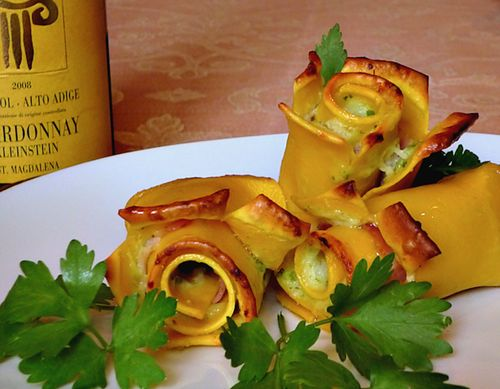
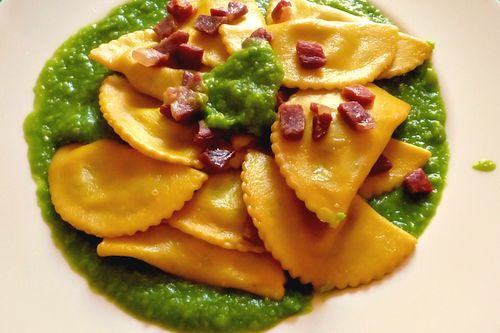
This is a great blog to follow, and if you’re planning to be in Italy, check out her cooking school!
Baking with Andreas and Rose
Winding down the restaurant has been more exhausting than I ever imagined. My dear friend Andreas recently invited me to spend a weekend at his mother’s home on Long Island for some rest and relaxation. Beautiful gardens and an inviting swimming pool surround her home. How could I refuse?
Andreas is an accomplished baker – his family is full of professional bakers, so it’s in his blood. Moreover, he recently completed extensive baking instruction at New York’s French Culinary Institute. What better way to relax than enjoy the garden, the pool, and baking?
I met Rose Levy Beranbaum a few months ago when she began coming to Bellavitae at the recommendation of Karen Page and Andrew Dornenburg. Her cookbooks are well suited for every type of baker, from the novice (me) to the expert (Andreas). I had success with bread recipes from Rose’s The Bread Bible, so I asked Andreas if we could try some desserts from The Pie and Pastry Bible. He’s a fan of Rose’s so no convincing was necessary.
Here’s what we made:
Open-Faced Fresh Blueberry Pie (page 107)
There are several blueberry bushes on the property and the fruit is now at its peak. This pie seemed like the perfect choice. We put a twist on the recipe by using the crumb topping Rose uses on her Apple Crumb Pie (page 86). We used her Basic Flaky Pie Crust (Page 22).
The dessert turned out beautifully – the pie’s star was undoubtedly the blueberries, which we had freshly picked. No cloying sauce or heavy pastry to crowd out nature’s sweet gift to summer – fresh berries. What a delight.
Classic Napoleon (page 453)
Gulp. What dessert is more intimidating? Or more satisfying! I hadn’t had Classic Napoleon since the last time I vacationed at the Cala di Volpe. This resort hotel on Sardinia’s Costa Smeralda may very well have the best hotel lunch in the world. The freshest, most carefully crafted cuisine still remains in my memory – including their Napoleon, which I had at least once a day (!)
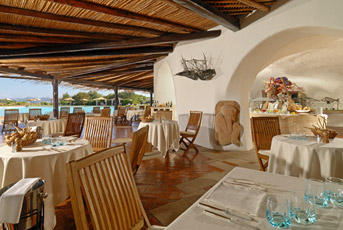
The Napoleon is a combination of many French classics:
Classic Puff Pasty [Millefoglie in Italian] (Page 417)
Puff pastry seems to be the threshold over which all would-be pastry chefs must cross. Once again, Rose guides you through the process with ease, anticipating any question or problem that may arise during your endeavor. And yes, Rose, we gave the pastry a total of seven turns!
Poured Fondant (Page 581)
What used to be a painstaking process for this cream confection is now extraordinarily easy with Rose’s use of a food processor.
Pastry Cream [Crème Pâtissière] (Page 560)
Rose’s version of this classic custard is light but still flavorful due to her use of whole eggs (instead of just the yolks) and half-and-half (instead of heavy cream). Fat tends to dull the palate, so a lighter pastry cream will allow other flavors of any dessert to shine (éclairs, fruit tarts, and of course Napoleons).
Chocolate Drizzle Glaze (Page 454)
As Rose suggests in other recipes, we used chocolate that had not too-high a percentage of cocoa – I think we used 52%.
Cooking – and baking – can be so relaxing. And it’s a fun project to do with a dear friend. Our two desserts turned out wonderfully and I just finished the last piece of the Napoleon today – it kept well refrigerated since Sunday.
So thanks Andreas and Rose (and Ingeborg and Wil). I have a few new techniques under my belt!
By the way, Rose has one of the most helpful websites / blogs for baking and I highly recommend it. She has developed a sizeable following of bakers that write in to offer comments and ask questions. So if you cook from one of her books and get stuck, you can simply check out her blog for comments or even write in and wait for her to answer, something that is rare in the cookbook world.
Finally, here is what amazon.com has to say about The Pie and Pastry Bible:
Reading about the ins and outs of baking the perfect, flaky pie crust is a little like reading about how to achieve the perfect golf swing: the proof is in the doing. And it often takes a remarkably intuitive reader to understand exactly what the author is getting at. Not so the work of Rose Levy Beranbaum, the author who gave us The Cake Bible. If ever there was a cookbook author who could place her hands on top of yours, putting you through the proper motions, helping you arrive at just the right touch, Beranbaum is the one.
The Pie and Pastry Bible begins with the crust. The author confesses right up front that 21 years ago, when she first began her quest for the perfect crust, “it was a complete mystery to me.” She wasn’t looking for a once-in-a-lifetime experience, but something she could consistently turn out at a moment’s notice. The ideal pie crust, she writes, “has light, flaky layers, but also … is tender, and nicely browned, with a flavor good enough to eat by itself.”
In a book that stretches to about 700 pages long, her favorite pie crust is the first recipe: Perfect Flaky and Tender Cream Cheese Pie Crust. Typically, Beranbaum lists the ingredients by measure and weight for three separate sizes of pies, then gives instructions for the food processor or by hand.
After 70 pages of pie crusts, tart crusts, and crumb pie crusts of every imaginable make and combination, Beranbaum starts with fruit pies. Her first (of many) detailed charts shows exactly what her ratios are of fruit to sugar to cornstarch. Then each recipe (start with The Best All American Apple Pie) includes pointers for success as well as several variations on the theme. Under the headline “Understanding,” Beranbaum goes that extra mile by taking the trouble to explain just why something works the way it does.
If you are only going to own one cookbook for pie and pastry recipes of every imaginable stripe and combination, you can’t go wrong with this one. It’s the Bible, after all.
–Schuyler Ingle
Anna Tasca Lanza – Sicily’s Ambassador of Food and Wine
A helpful way to understand any society in history is to study its cuisine. Sicily is especially fascinating due to influence from other civilizations throughout its history. The Greeks, Phoenicians, Iberians, Romans, Byzantines, Arabs, Normans, and Angevins have all shaped Sicilian traditions, including cuisine. It wasn’t until 1860 that Sicily became a part of the Kingdom of Italy.
Over the centuries, Sicily has developed layers of interesting culinary traditions and unique flavor combinations. If you begin to study Sicilian cuisine, you will undoubtedly encounter Marchesa Anna Tasca Lanza di Mazzarino, one of the important historians of Sicilian food and wine.
She has written several important cookbooks, including The Flavors of Sicily, Herbs and Wild Greens from the Sicilian Countryside, The Heart of Sicily, and The Garden of Endangered Fruit. In 1989 she began The World of Regaleali cooking school at the family’s estate, which is also home to famous vineyards, groves, and gardens.
The Amazon.com review of her book, The Heart of Sicily, captures the spirit of Anna Tasca Lanza:
Many cookbooks tempt, inform, and inspire. A few capture the essence of a place, but rarely does a cookbook communicate the very soul of a place. Anna Tasca Lanza’s telling of life at Regaleali, the vast estate that has belonged to her family since 1830, is so vivid that you feel her sitting next to you, talking and turning the pages of The Heart of Sicily as if it were a photo album.
Tasca Lanza provides enough information about Sicily’s complex history and rich culture to help you understand the special nature of Regaleali and what her noble family – rich with barones, principessas, and contessas – has created. Under their stewardship, this working estate has become an international cooking school. It is also the place where Tasca Lanza pursues her passion for preserving the abundant culinary and cultural traditions of Sicily.
The short video below, narrated by her daughter Fabrizia, gives a glimpse of the beautiful estate:
In February 2005, after Bellavitae had been open less than two months, we asked Anna if we could feature her at a private dinner that would include recipes from her cookbooks paired with wines from the Regaleali estate. We would call it A Night in Sicily. Much to our delight, she enthusiastically accepted. She publicized the event on the Regaleali website where it remains today:
Anna Tasca Lanza, from The World of Regaleali, will be hosting a dinner at a new restaurant in New York. She will be at Bellavitae on Tuesday, February 15, 2005. There is a reception from 6:30-7:30 pm where you can meet this fabulous chef, and a dinner following at 7:30 pm. The dinner will be a special five-course menu featuring Sicilian dishes prepared from Anna’s cookbooks and will include a tasting of Regaleali Tasca d’Almerita wines and olive oil. A Night in Sicily will be a rare opportunity to meet and talk to a noted culinary authority and taste the flavors of Sicily here in the United States.
The evening was delightful. Guests enjoyed the food and wine pairings, as well as the interaction with one of Sicily’s food and wine authorities.
One dish stood out that evening, and it was the cauliflower. It was so impressive that we asked her if we could put it on our menu. She said, “Certo!” [Of course!]. In order to acknowledge the recipe’s source properly, we call it Cavolfiore ‘Anna’ [Cauliflower ‘Anna’].
By far, the most popular dish on Bellavitae’s menu is Cavolfiore ‘Anna.’ Imagine, the item most ordered at an Italian trattoria is a vegetable!
There are several Sicilian dishes that are similar to this recipe, including Pasta con i Broccoli Arriminati [Pasta – usually bucatini – with cauliflower, saffron, pine nuts, onion, currants, anchovies and toasted breadcrumbs]. But I suspect her recipe is based on a more well-known dish called Cavolfiore con l’Uvetta e i Pignoli [Cauliflower with Raisins and Pine Nuts]. Raisins and pine nuts in a dish divulge its Sicilian origin.
Anna substitutes currants for the raisins and adds caramelized onions. Genius. The flavors work exceptionally well together, and the sensation in the palate is most pleasing. The juxtaposition of contrasting flavors and textures create perfect balance. No wonder it’s so popular!
We thank Anna Tasca Lanza for her great work in researching, documenting, and promoting Sicilian culture, especially the region’s food and wine. And we think of her every time someone orders Cavolfiore ‘Anna.’
Here’s an excerpt from her biography that appears on the cooking school’s website:
I was the first of four children. Welcomed with great joy but with one regret: I was not a boy.
My family lived a very comfortable life. My grandparents were very much present along with my parents, a brother and two sisters. At the age of 15, I was sent to Lausanne to study at the école menagère Briamond, to learn how to be a good wife. It was a revelation to me: I learned many things, from embroidery to French cooking. When I came home after two years my father put me to the test immediately, asking me to prepare choux au fromage, which turned out perfectly (to my good fortune). But then nothing happened; for years I never again touched a saucepan. In the meantime I married Venceslao Lanza di Mazzarino, son of a great Sicilian noble family who was accustomed to eating international cuisine prepared by the cooks of the family, once called Monsù.
Mine was not exactly what one would call the life of an average housewife. I lived with Lanza in a huge palazzo in the center of Palermo, where nobody had any idea what went on in the kitchen and where the chef, every evening, questioned Count Fabrizio, my father-in-law, about what was wanted for the following day’s menu. None of us, and above all my mother-in-law, the lady of the house, ever set foot in the kitchen. These, as you can see, were other times!
When Fabrizia was born, we moved into our own household, and this changed our relationship with food because I suddenly found myself facing the stove. Encouraged by my parents, I set up a little cooking school at Regaleali, the family vineyards, assisted, at first, by my sisters Costanza and Rosemarie. I began to visit America, year after year, and got to know that extraordinary country where, with great freedom, everyone– young and old, women, men and children—is offered an opportunity in life. I got to know the world of people who work with food, all so generous and encouraging about my Sicilian adventure. In 1989 I had my first group of American students.
Promoting my school and our wines, I did a little bit of everything, writing several Sicilian cookbooks in English (these had great success), giving talks and demonstrations at the Smithsonian, with James Beard, at Cipriani, at the Culinary Institute of America. Perhaps the most moving thing I’ve done in my career was to give the Commencement speech at the Culinary Institute of America in Hyde Park, saluting and encouraging young Americans as they began their life as chefs.




